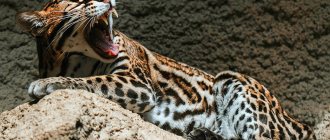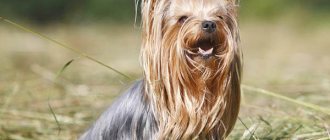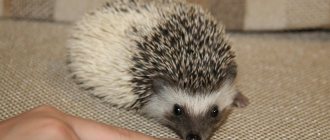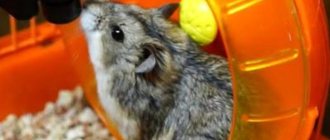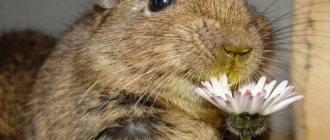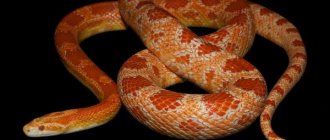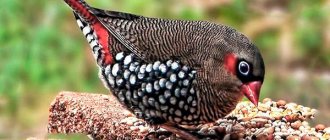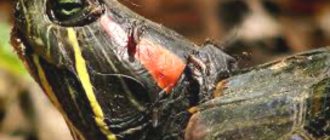- home
- Kinds
19.03.2018
The hamster is a very popular pet. Due to its compactness, it can be installed in an apartment of any size. There are about 20 species in nature. The most suitable for breeding at home are the Djungarian, Siberian and Campbell's hamsters. Breeders are attracted by the low price for the animal and easy care. Let's take a closer look at Siberian hamsters and everything about them.
Appearance
In appearance, the Siberian hamster resembles a fluffy ball with an inconspicuous tail. It reaches a length of 7-10 cm. The average weight of the animal is 25 g; if kept at home, it can increase to 50 g.
The main color of the hamster is black and gray with a brown longitudinal stripe on the back and a light gray belly. In addition to the usual coloring, sapphire and pearl colors have been bred. On the head are dark, almost black eyes and small ears. The presence of cheek pouches serves to collect and carry food. The short limbs of the paws with five toes are covered with hair.
How to feed?
The easiest way to feed is to use ready-made food, sold in any pet store. They contain a mixture of seeds and grains necessary for proper nutrition of a hamster. Usually one package lasts for a month.
Fruits and vegetables are periodically given as treats. But there should not be too many of them, otherwise the animal may have a bloated belly due to excess carbohydrates. A child will need from 10 to 20 g of “green stuff” per day.
After the next feeding, all leftover food is removed so that it does not spoil and subsequently cause poisoning. Although it is unlikely that scraps will be found in the feeder. The fact is that kids love to stock up “for the winter” by dragging grain in their cheek pouches and hiding them in different corners of the cage. Therefore, the bins are checked and cleaned periodically.
Hamsters usually drink little, since a sufficient amount of liquid comes from succulent food. Despite this, water must be constantly available and changed at least twice a day.
The Siberian is a very cute dwarf animal that will bring joyful bustle and variety into the life of any person.
Characteristics
Most rodent lovers want to know everything about Siberian hamsters. The presence of features in behavior and characteristics is expressed by the following criteria:
- Siberian hamsters are called white Russian dwarf hamsters because of the special property of changing the color of their coat: from gray to white in winter;
- adults lead a calm and slow lifestyle in relation to the young;
- Siberian hamsters are mainly nocturnal. With the onset of darkness, which serves as protection for them from encounters with insidious predators - foxes and owls, they go out in search of food.;
- orientation in space with the help of whiskers allows animals to determine the width of loopholes and the distance between objects;
- rodents easily recognize each other by the smell of the marked territory;
- different-sex individuals of the breed live together only during the mating season, and the rest of the time they live separately and protect their homes from encroachment by other animals;
- with the onset of three months of age, females are able to reproduce with a gestation period of 19 days.
Buying Syrian hamsters
Such an animal is sold in pet stores, through advertisements or on the market. At the same time, many who want to purchase a Central Asian hamster on the market should be warned, since there is no guarantee of purchasing a healthy animal.
Short-haired types of Syrian hamsters can cost around 300 rubles maximum, while long-haired types are more expensive and will have to pay up to 600 rubles for them.
Buying a Hamster New Pet Syrian Hamster First Day | Elli Di Pets
Natural living environment
In the wild, Siberian hamsters live on hilly and flat steppes. They live alone and in small groups. The established community does not accept adult newcomers. The animals' home is burrows, which they themselves dig in the form of tunnels to a depth of 1.5 meters. A labyrinth of numerous passages provides space for nesting and food storage and reaches a length of up to 8 meters.
Males occupy up to 12 hectares of housing area. The territorial qualities of the hamster's character make it possible to carefully protect the home from uninvited guests. Females settle nearby and are under the care of the stronger sex. Their territory is smaller than that of the male. In winter, rodents have to go into prolonged torpor to survive severe frosts. This process cannot be called full hibernation, because animals have to wake up periodically to consume food.
Siberian hamster at home
The Siberian hamster at home is an unpretentious animal. It can live in a cage and will comfortably set up its burrow in an aquarium. It is unpretentious in nutrition and does not require strict air temperature for maintenance. In comfortable conditions they live up to 4 years, with proper care and maintenance. The age of the hamster does not affect mobility; an “elderly” rodent is as active as a young one.
Features of keeping and caring for a hamster
A hamster, like any other pet, needs proper care. How to care for hamsters? The cage for it should be:
- Spacious so that he can move comfortably, you can arrange a second floor, he will be happy to explore the space. If the cage is not very large, put a running wheel in it. Without movement, the hamster quickly gets fat and gets sick.
- The gaps between the bars of the cage should be no more than 8 mm, otherwise the furry pet will definitely try to escape.
- Easy to clean. The bedding in the cage needs to be changed every 1-2 days, so it is important that this can be done easily and conveniently. Aspen sawdust or white paper are best suited for bedding; paper with dyes should not be used, as the paint composition is harmful to the animal.
You can place the rodent in an aquarium of suitable size, so it will not have a chance to escape. But cleaning an aquarium is more difficult than cleaning a cage.
During cleaning, the pet should be placed in a container or allowed to run around the house in a special wheel (one of the household should monitor the animal during this time). Hamsters do not like encroachments on their territory, so they can be aggressive if you start cleaning in their presence.
The location for the cage is chosen away from heat devices and direct sunlight (bright light irritates blind eyes); direct proximity to household appliances is undesirable, since rodents are sensitive to sharp sounds and detect ultrasound. Such content will be the most comfortable for the pet.
If you plan to raise offspring, you can keep two hamsters in one cage at once, but introduce them to each other as early as possible, preferably from childhood. They may need two houses as they like privacy. Hamsters reproduce quickly. If you do not need numerous offspring, then it is better to keep rodents in adjacent cages or in a cage with a partition.
Where to place it?
Before you bring a hamster into your home, you need to prepare a place for it to live. If you don't take this seriously, the baby will get lost in a large apartment and die.
Hamsters are not very demanding of the external environment, but feel good at a comfortable temperature of 17 to 26 degrees Celsius.
Everything that is unpleasant for us will not be pleasant for the hamster either. When assigning a cage to a particular place, you should think about whether it will be comfortable for him to be there. Considering the negative impact of some places in the house, we can conclude that you should not install a cage:
- near the radiator;
- on the windowsill, in direct sunlight;
- near operating equipment;
- in a draft;
- in noisy places;
- in bedrooms (taking into account the nocturnal lifestyle of pets).
Diet
In order for your pet to grow up healthy, it is important to provide it with proper nutrition. You need to feed him regularly, twice a day - morning and evening.
Did you know? Dill, plantain and dandelion are a real treat for the animal.
What is possible
The animal's diet must contain grain and granulated mixtures. But you shouldn’t limit yourself only to store-bought food. Include in the menu:
- fruits (including dried);
- vegetables;
- greenery;
- boiled chicken meat;
- egg;
- cottage cheese;
- strawberries;
- raspberries;
- grape.
What not to do
You should not give human food to rodents. It is prohibited to include in the diet:
- fried, salty foods;
- sweet, sour, flour and spicy dishes;
- garlic; beets;
- cabbage;
- onion;
- plum;
- citrus.
Before you get a hamster, find out what to feed it. We recommend reading about what diet is most suitable for hamsters.
The Siberian hamster is a wonderful animal that will bring you and your child a lot of pleasure. However, we should not forget that, like any living creature, rodents need proper care and attention. Their absence can significantly reduce the life expectancy of a fluffy.
Recommendations
- https://animaldiversity.org/accounts/Cricetinae/
- ^ abcdef Fox, Sue. 2006. Hamsters
. TFH Publications Inc. - ^ abcdef Barry, Anmarie. 1995. Hamsters as a new pet. TFH Publications Inc., NJ ISBN 0-86622-610-9.
- ↑
Patricia Pope Bartlett (2003). Hamster Handbook. Barron's Educational Series. paragraph 113. ISBN 978-0-7641-2294-1. - Neumann, K; Michaux, J; Lebedev, V; Yigit, N; Colak, E; Ivanova, N; Poltoraus, A; Surov, A; Markov, G (2006). "Molecular phylogeny of the subfamily Cricetinae based on mitochondrial cytochrome b and 12S rRNA genes and the nuclear vWF gene" (PDF). Molecular phylogenetics and evolution
.
39
(1): 135–48. DOI: 10.1016/j.ympev.2006.01.010. PMID 16483801. - ↑
Lebedev V.S., Ivanova N.V., Pavlova N.K., Poltoraus A.B.
2003. Molecular phylogeny of Palaearctic hamsters. In
proceedings of the International Conference on Taxonomy, Phylogeny and Paleontology of Small Mammals, dedicated to the 90th anniversary of Professor I. M. Gromov (ed. A. Averyanov and N. Abramson). Saint Petersburg. - ^ abcd Fritsche, Peter. 2008. Hamsters: A Complete Guide for Pet Owners. Educational Series Barron's Inc., NY ISBN 0-7641-3927-4.
- ^ abcde Koonen, G. (2002). Comfortable housing for hamsters in research institutions. In Comfortable Facilities for Laboratory Animals, Ed. W. Reinhardt and A. Reinhardt. Animal Welfare Institute, Washington, DC. pp.33–37
- Douglas Harper, Online Dictionary of Etymology
, entry for "hamster" - Merriam-Webster Collegiate Dictionary, st. "hamster" (May 29, 2008) Merriam-Webster.com
- https://www.answers.com/Q/What_is_a_group_of_hamsters_called
- King, LeeAnn Engfer; photographs by Andy (1997). My pet hamster and gerbils
. Minneapolis: Lerner. paragraph 13. ISBN 978-0822522614. - ↑
Thomas A. Scott (1995). Concise Encyclopedia of Biology (Rev. ed.). Berlin: Walter de Gruyter. paragraph 299. ISBN 978-3110106619. - ^ abc "Anatomy | About hamsters | Hamsters | Guide | Omlet US". www.omlet.us
. Retrieved November 20, 2022. - Bartlett, Patricia Pope; Earl-Bridges, Michelle (2003). Hamster Handbook. Barron's Educational Series. clause 21. ISBN 9780764122941.
- ^ a b "Hamster body language and behavior: what does it mean". Pet care
. Retrieved November 20, 2022. - ^ a b "All about keeping hamsters as pets". Spruce pets
. Retrieved November 20, 2022. - "Is this safe for your hamster?" . Spruce pets
. Retrieved November 20, 2022. - ^ab "hamster". Encyclopædia Britannica. Standard version. Chicago: Encyclopedia Britannica, 2007.
- Petri, Inez; Dumbell, Rebecca; Scherbarth, Frank; Steinlechner, Stefan; Barrett, Perry (2014). "Effects of exercise on photoperiod-regulated hypothalamic gene expression and peripheral hormones in the seasonal dwarf hamster Phodopus sungorus". PLOS One
.
9
(3):e90253. Bibcode: 2014PLoSO...990253P. DOI: 10.1371/journal.pone.0090253. PMC 3946023. PMID 24603871. - ^ ab https://www.britishhamsterassociation.org.uk/get_article.php?fname=journal/hibernation.html
- Gattermann, R.; Fritzsche, P.; Neumann, K.; Al-Hussein, I.; Kayser, A.; Abiad, M.; Yakti R. (2001). "Notes on the modern distribution and ecology of wild golden hamsters (Mesocricetus auratus)." Journal of Zoology
.
254
(3):359–365. DOI: 10.1017/S0952836901000851. - Musser, Guy. "Hamster | Facts and breeds". Encyclopedia Britannica
. Retrieved February 1, 2022. - “How soon can you take the hamster away from its mother?” . animals.mom.me
. Retrieved November 20, 2022. - "Leonard Goodwin - Telegraph". Daily Telegraph
. January 14, 2009. Retrieved January 18, 2009. - ↑
Testimony of Grant Riddle (born 1929, lives in Wildwood Lake, California), who had a pet hamster in 1942. - ^ abcd Logsdale, Chris; Logsdale, Peter; Hovers, Keith (2002). Hamsterlopaedia: A Complete Guide to Hamster Care
. Lydney: Ringpress. item 161. ISBN. 978-1860542466.
Content
- 1 Classification 1.1 Relationships between hamster species
- 4.1 Feelings
- 5.1 Feeding
- 6.1 Fertility
- 7.1 Hamsters as pets
Etymology
The name "hamster" is a German loanword that comes from the earlier Middle High German hamastra
.
It may be related to the Old Church Slavonic khomestoru
, which is a mixture of the root of Russian khomiak (
khomyak
) "hamster" and the Baltic word (cf. Lithuanian
staras
"hamster");
[9] or of Persian origin (cf. Av hamaēstar
"oppressor").
[10] The collective noun for a group of hamsters is "horde". [11] [ need better source
]
Arrangement of the cage
The Syrian hamster, its care and maintenance plays an important role
But providing the most basic needs is of utmost importance. One of these needs is a cage of sufficient size and with the correct contents.
For this type you need a minimum size of 50x30 centimeters. Try to fill it as much as possible. There are many accessories that can add variety to your pet's life.
Make a variety of tunnels whenever possible. Ideally, they connect two cells. But remember, there is only one animal per dwelling (cage). If the fluffies meet somewhere, they won’t be so kind. Each will defend their territory and both will be susceptible to stress and injury. Deaths are not uncommon.
Each cage must have bedding. They buy a special filler for the bottom that absorbs moisture and odor. It is best to use corn.
Fictional breeds
There are about 20 varieties of hamsters on the planet, but sometimes groups of hamsters with certain characteristics are mistakenly classified as separate non-existent breeds. Such fictitious breeds will be discussed in this section.
Albino
Albinos are hamsters whose bodies do not produce the hormone melanin. As a result, they have white fur and red eyes, with blood vessels visible through the colorless iris. They have increased sensitivity to light. Such hamsters are not classified as a separate breed, because this is only a malfunction of the genetic apparatus of a Syrian, Djungarian or any other breed of hamster.
Angora
This is an artificially bred long-haired Syrian hamster. It got its name because of its shaggy coat, which looks like the fur of an Angora goat. Distinctive features are the absence of a tail, small front legs, large cheeks and long hair, which in males reaches 5 cm. The color can be different: spotted, cream, white, black.
Royal
The shaggy golden Syrian hamster is passed off as a royal hamster. But there is no such breed; usually this is done to obtain the greatest benefit.
Black
A black hamster can be a Syrian, Djungarian, or Chinese hamster, because it is not a separate breed, but simply a fur color. Black hamsters are considered animals that do not have any spots of a different color on their body. It is acceptable to have white color on the toes and paws. They are very difficult to breed, which is why they are expensive.
Golden
There is no breed of golden hamster. This is sometimes the name given to Syrian hamsters, whose skin color has a bright golden-sandy hue.
White
White hamsters are usually albinos. They are often passed off as a separate rare species by pet store sellers to make more profit.
Story
Although the Syrian hamster or golden hamster ( Mesocricetus Auratus
) was first described scientifically by George Robert Waterhouse in 1839, researchers were unable to successfully breed and domesticate the hamster until 1939. [3] The entire laboratory and animal population of Syrian hamsters do not appear to be descendants of brother and sister. These littermates were captured and imported in 1930 from Aleppo in Syria by Israel Aharoni, a zoologist at the University of Jerusalem. [7]In Jerusalem, hamsters reproduce very successfully. Years later, animals from this original colony were exported to the United States, where Syrian hamsters became a common pet and laboratory animal. Comparative studies of domestic and wild Syrian hamsters have shown reduced genetic variability in the domestic strain. However, differences in behavioral, chronobiological, morphometric, hematological and biochemical parameters are relatively small and fall within the expected range of interindividual variation in other laboratory animals. [8]
It's still a pity
The forest hamster carbysh causes many problems to gardeners. Everyone must decide for themselves how to get rid of it. However, it is not for nothing that ultrasonic repellers were invented, which are installed in small areas. Hearing a sound that is harmless to people and pets, the forest hamster simply does not come to the site, so there is no need to get rid of it. Or humane traps that allow you to catch and release an animal without harming it. We must remember that ordinary mousetraps will not be able to hold a strong hamster. Traps can cause pain and distress, especially if they are left in the hot sun. The hamster cannot stand the heat and will die in a few hours in the sun.
From our article you learned who the karbysh are, but I would like to add a few lines. A person can come up with a lot of things in order not to destroy living things. But often he begins to hate nature, which causes him damage. And the culprits are small animals. But at the same time, one should think about whether humans are not entrusted with the function of controlling the growth of populations of some animals, such as wolves and foxes, which destroy hares. If this mechanism did not exist in nature, then rodents would soon eat all the plants, and, possibly, small invertebrates, and then each other.
The main thing is to approach what we do wisely. After all, we are not wild animals and we must constantly think about how to make sure that all living beings on this planet have enough space and food. Perhaps in the distant future it will be possible to come up with means of controlling rodents that will not lead to their death, or invisible and non-traumatic barriers will be created so that it will be possible to protect your plot of land from uninvited pests.

